Command prompt is a great utility to execute tasks and has been a part of Windows forever. Many users prefer Command Prompt over the conventional GUI method since it’s quicker, more convenient, and offers many tools that are not present in the graphic interface.
There are multiple ways you can launch ‘Command Prompt’ on Windows 11. Once you get to know all the ways, choose the one that suits you.
1. Open Command Prompt in Windows Terminal
Windows Terminal is a powerful and efficient terminal application for command-line tool users. It included Command Prompt, Windows PowerShell, amongst others, that can be open in separate tabs simultaneously.
When you launch Windows Terminal, it by default opens the PowerShell tab. You can either open the Command Prompt in a new tab or change the settings to open Command Prompt every time you launch Windows Terminal. We will see how to do both.
Launching Command Prompt Tab in Windows Terminal
Press the WINDOWS key to launch the ‘Start Menu’, type ‘Windows Terminal’, and then click on the relevant search result to launch the app. Or, to open Windows Terminal with administrator privileges, right-click on the Windows Terminal search result and then select ‘Run as administrator’ from the context menu.
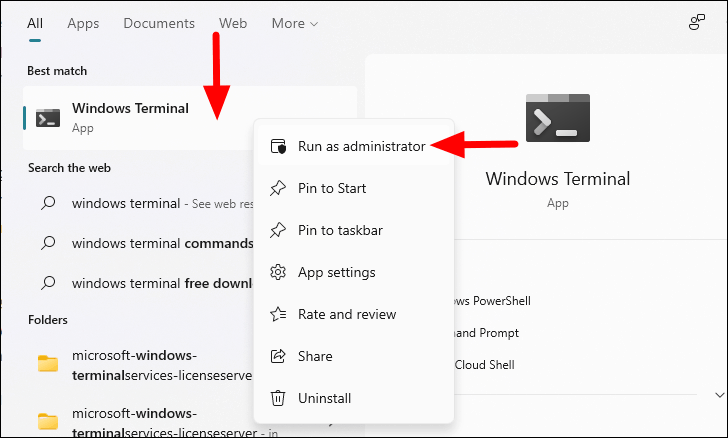
In the Windows Terminal window, click on the downward-facing arrow and select ‘Command Prompt’ from the menu. You can also go with the CTRL + SHIFT + 2 keyboard shortcut to launch Command Prompt in a new tab.

The Command Prompt will now open in a new tab.

Set Command Prompt as Default Profile in Windows Terminal
To set Command Prompt as default profile in Windows Terminal, click on the downward-facing arrow and select ‘Settings’ from the drop-down menu. You can also press CTRL + , to launch Terminal Settings.

In the ‘Startup’ tab of Windows Terminal Settings, which will open by default, click on the drop-down menu under ‘Default Profile’.
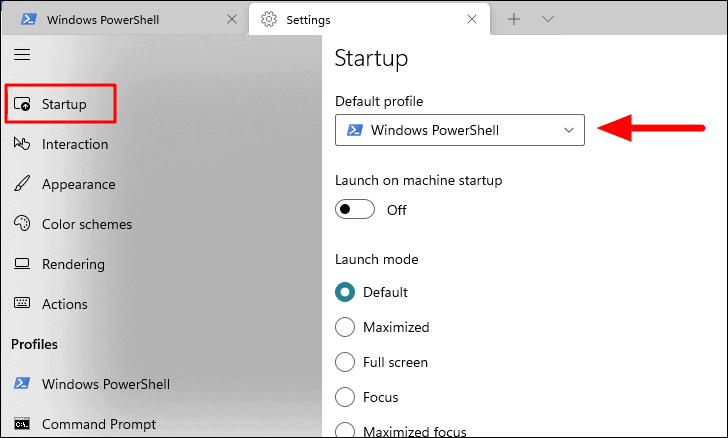
Next, select ‘Command Prompt’ from the menu.

Finally, click on ‘Save’ at the bottom-right corner to make Command Prompt the default profile.
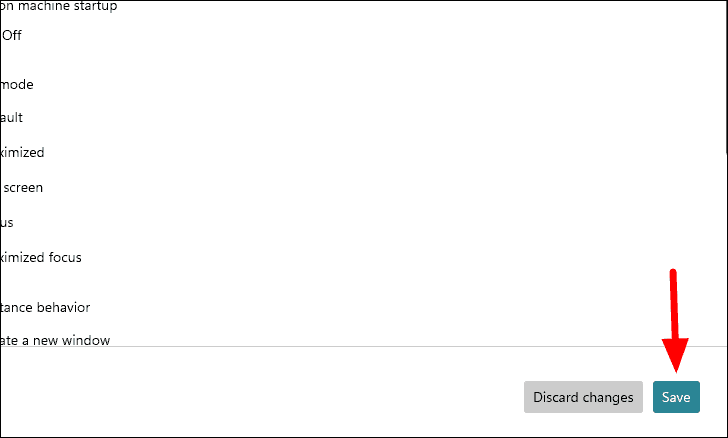
From now on, Command Prompt will open by default when you launch Windows Terminal.
2. Open Command Prompt from Start Menu
Another easy way of opening the Command Prompt is from the ‘Start Menu’.
To open Command Prompt from the Start Menu, press the WINDOWS key or click on the ‘Start’ icon in the Taskbar to launch the ‘Start Menu’. Then click on the ‘Command Prompt’ icon in the section for ‘Pinned’ apps at the top.
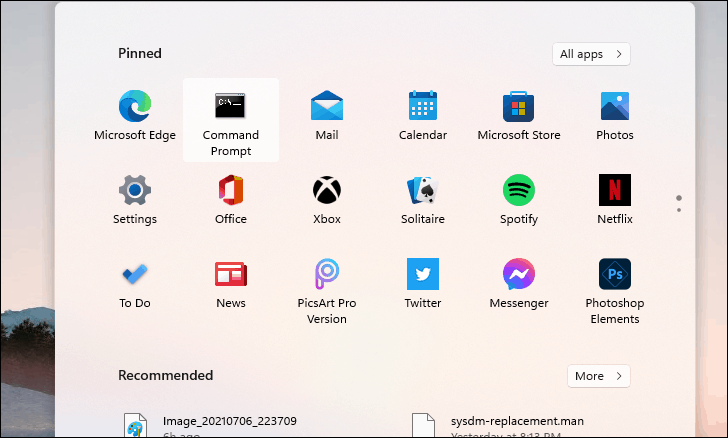
To launch an elevated Command Prompt from the Start Menu in Windows 11, right-click on the ‘Command Prompt’ option and select ‘Run as administrator’.
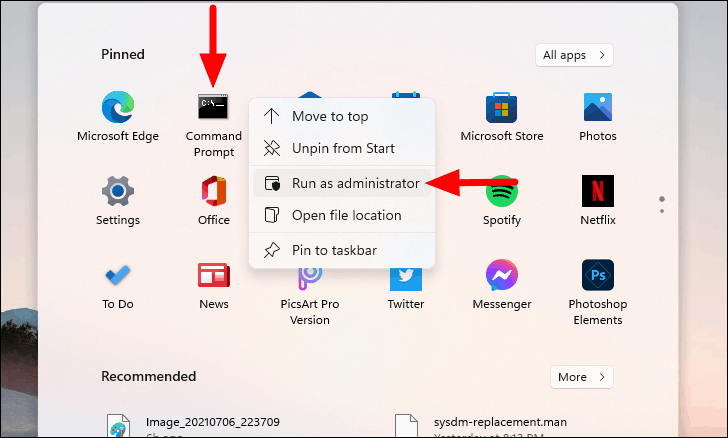
Note: The Command Prompt will only be listed under the ‘Pinned’ section if it has been pinned to the Start Menu.
Pin Command Prompt to Start Menu
To pin Command Prompt to the Start Menu, press WINDOWS + S, search for ‘Command Prompt’, right-click on the ‘Search Result’, and select ‘Pin to Start’.
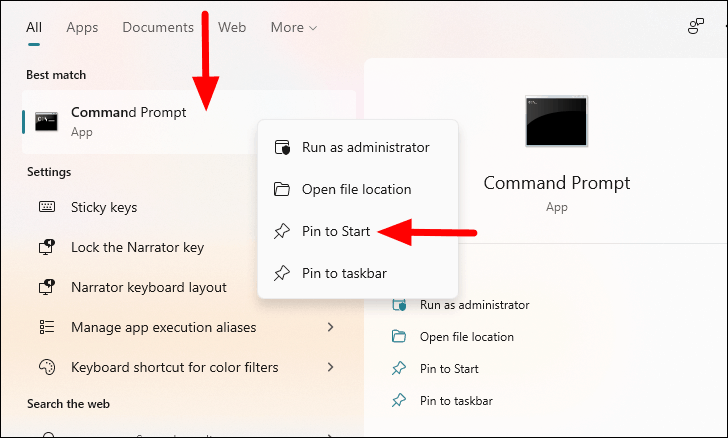
3. Open Command Prompt from Search Menu
You can also open the Command Prompt from the ‘Search Menu’.
First, either press WINDOWS + S or click on the ‘Search’ icon in the Taskbar’. Now, search for ‘Command Prompt’ and click on the relevant search result to launch the app.

To launch an elevated Command Prompt from the ‘Search Menu’ in Windows 11, right-click on the search result and select ‘Run as administrator’ from the context menu.
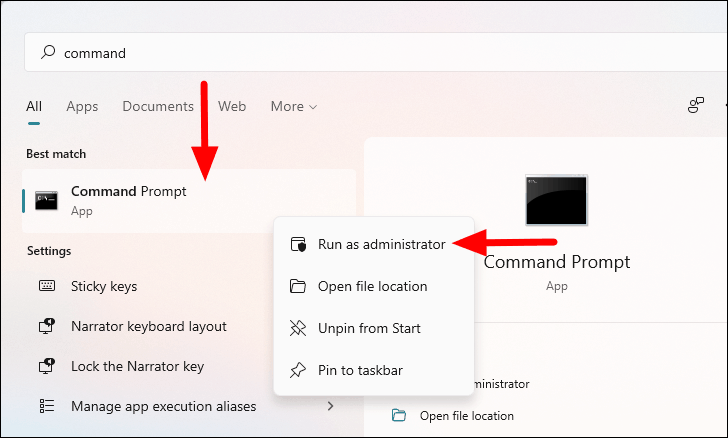
4. Open Command Prompt from Run Command
To launch Command Prompt from the Run command, press WINDOWS + R to launch the Run box, type ‘cmd’ in the text box, and then either click on ‘OK’ at the bottom or press ENTER to launch the ‘Command Prompt’.
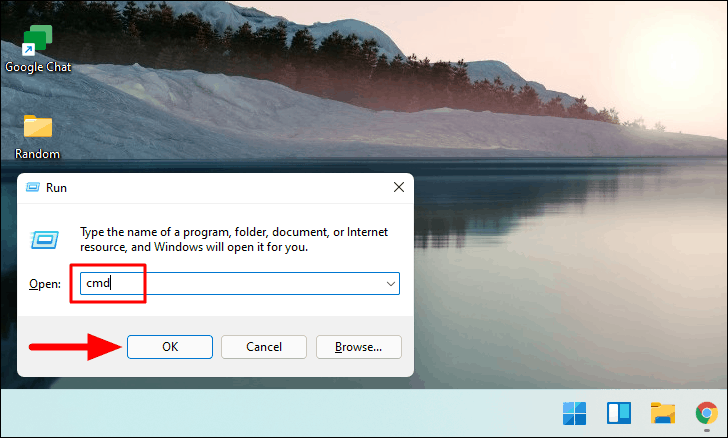
5. Open Command Prompt from Desktop Shortcut
If you access Command Prompt to execute tasks frequently, adding a shortcut to the desktop makes complete sense.
To add a shortcut for Command Prompt on the Desktop, right-click on any empty portion of the desktop, hover the cursor over ‘New item’ and select ‘Shortcut’ from the list of options.
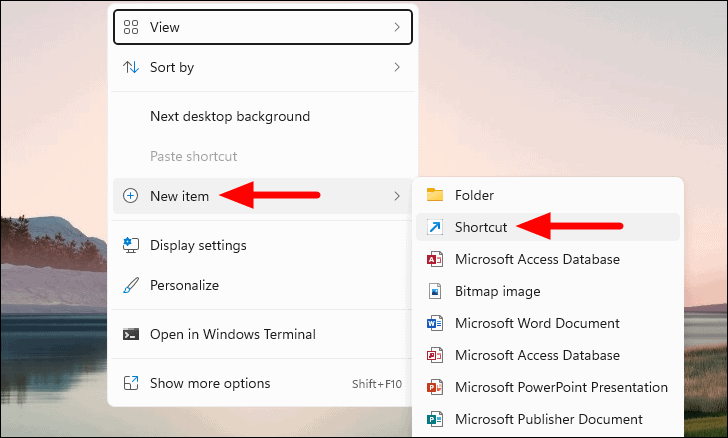
In the ‘Create Shortcut’ window, enter ‘cmd’ in the text box under ‘Type the location of the item’ and click on ‘Next’ at the bottom.

Next, enter a suitable name for the shortcut in the provided section and then click on ‘Finish’ at the bottom.

To open the Command Prompt from the Desktop shortcut, right-click on it and select open or select ‘Run as administrator’ for an elevated Command Prompt.
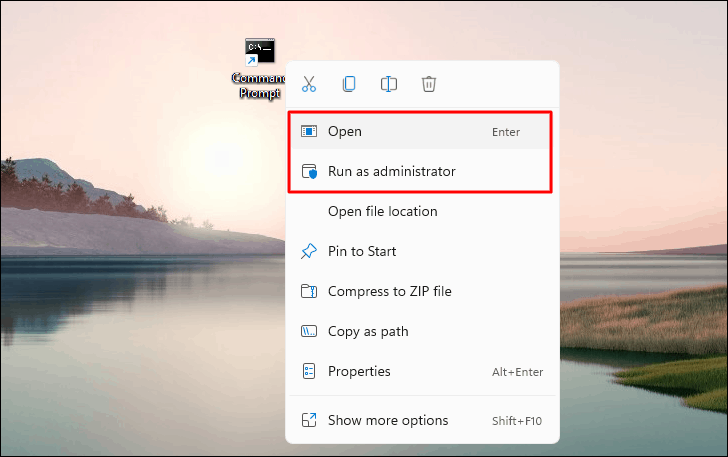
6. Open Command Prompt from the Taskbar
This is another option for those who often use Command Prompt. Adding it to the Taskbar ensures that it’s just a click away and saves a lot of time. But before you can access Command Prompt from the Taskbar, it has to be pinned to the Taskbar.
To pin Command Prompt to the Taskbar, search for it in the ‘Search Menu’, right-click on the search result, and select ‘Pin to taskbar’.

To open Command Prompt from the Taskbar icon, simply click on it.
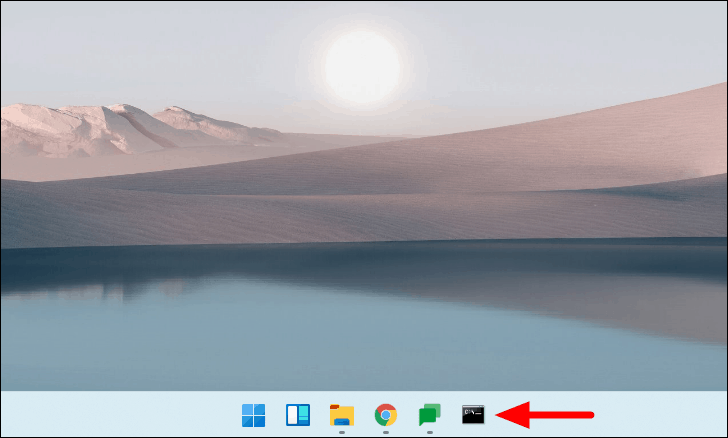
If you want to run an elevated Command Prompt, right-click on the Taskbar shortcut, then right-click on the ‘Command Prompt’ option, and finally select the ‘Run as administrator’ option.
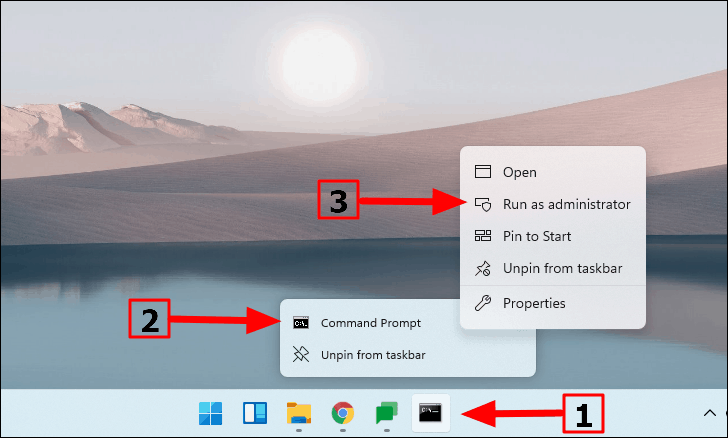
7. Open Command Prompt from File Explorer
Windows 11 also allows you to open Command Prompt from the address bar of the File Explorer. You can also navigate to the location where the ‘Command Prompt’ file is stored and launch the app.
Via Address Bar
To open Command Prompt from File Explorer, enter ‘cmd’ in the ‘Address Bar’ of the File Explorer and press ENTER.
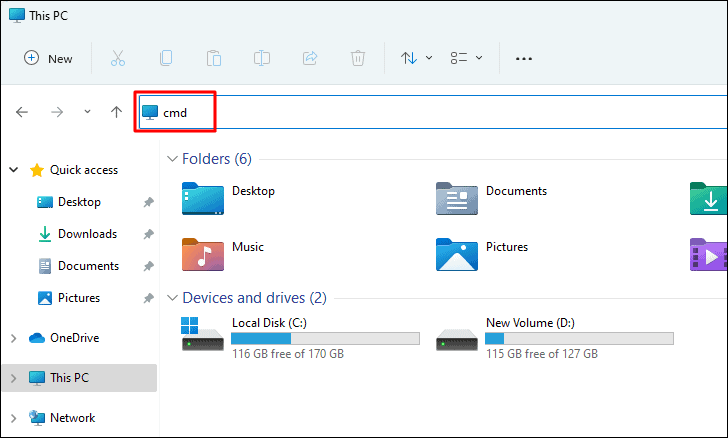
Via File Location
In the File Explorer, enter the following path in the address bar and press ENTER.
C:\Windows\System32Inside the System32 folder, locate the cmd executable file and double-click on it to launch the Command Prompt.

To open Command Prompt with administrative privileges, right-click on the file, and select ‘Show more options’ from the context menu.
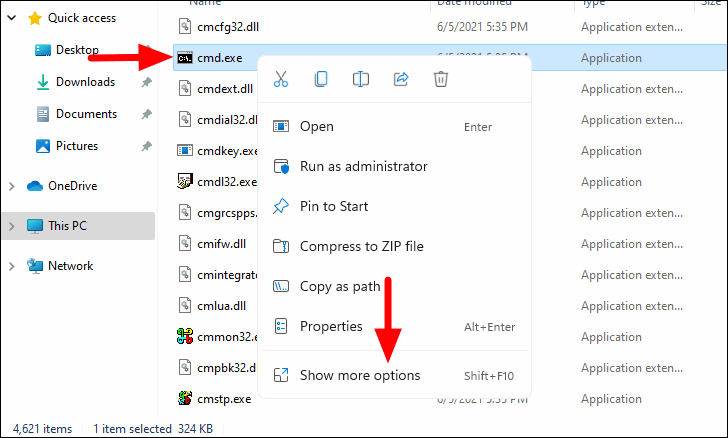
Now, click on ‘Run as administrator in the legacy context menu.
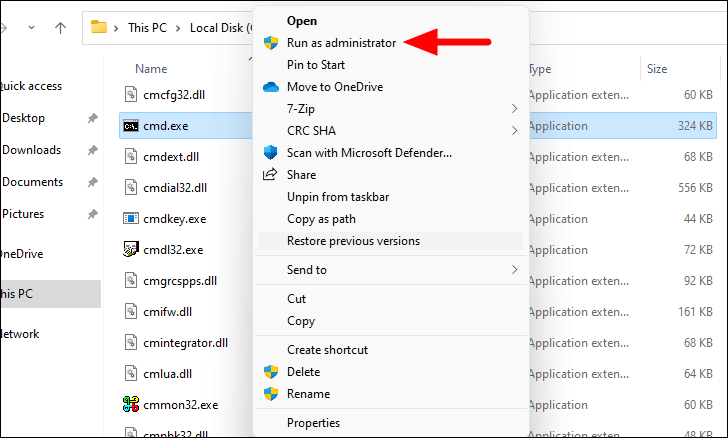
An elevated Command Prompt will now open.
8. Open Command Prompt from Task Manager
You can also open ‘Command Prompt’ from the Task Manager by creating a new task.
To open Command Prompt from Task Manager, search for ‘Task Manager’ in the ‘Start Menu’ and then click on the relevant search result to launch the app.
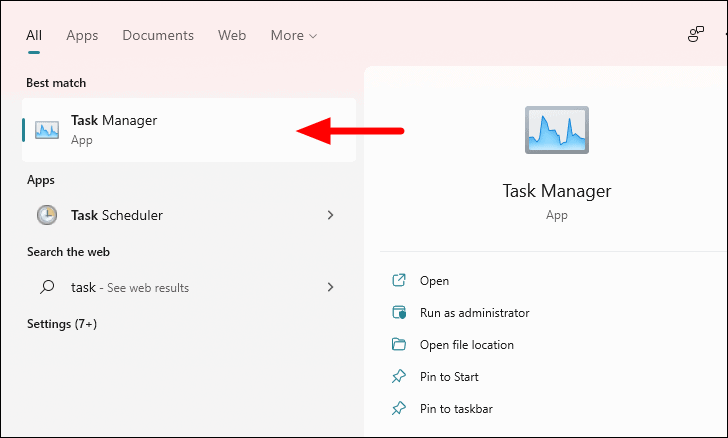
In the ‘Task Manager’ window, select the ‘File’ menu at the top-left and then click on ‘Run new task’.

Now, enter ‘cmd’ in the text box next to ‘Open’ and click on ‘OK’ at the bottom. If you want to launch an elevated command prompt, tick the checkbox for ‘Create this task with administrative privileges.

9. Open Command Prompt from Windows Recovery Enviroment
You can also launch the Command Prompt from Windows RE (Recovery Environment).
First, search for ‘Settings’ in the ‘Search Menu’ and click on the relevant search result to launch the app.

The ‘System’ settings will open by default, scroll down on the right and select ‘Recovery’.
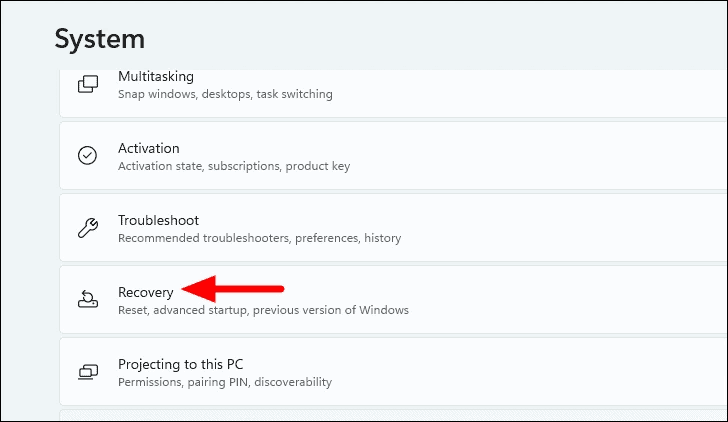
Next, click on ‘Restart now’ next to ‘Advanced startup’ under ‘Recovery options’.

Now, click on ‘Restart now’ in the box that shows up.
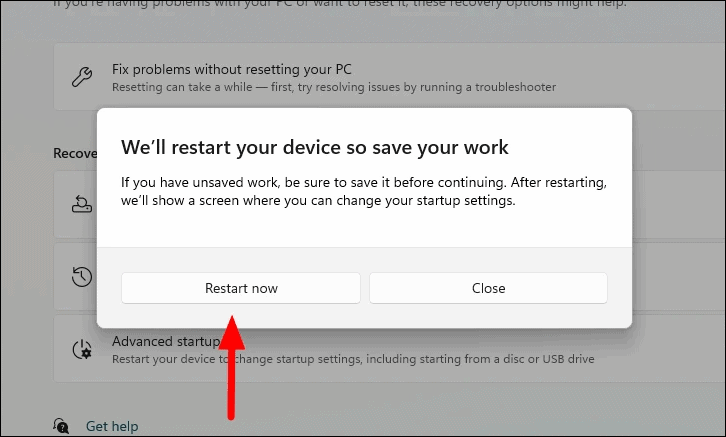
The system will restart and enter Windows RE. Next, select ‘Troubleshoot’ on the first screen.
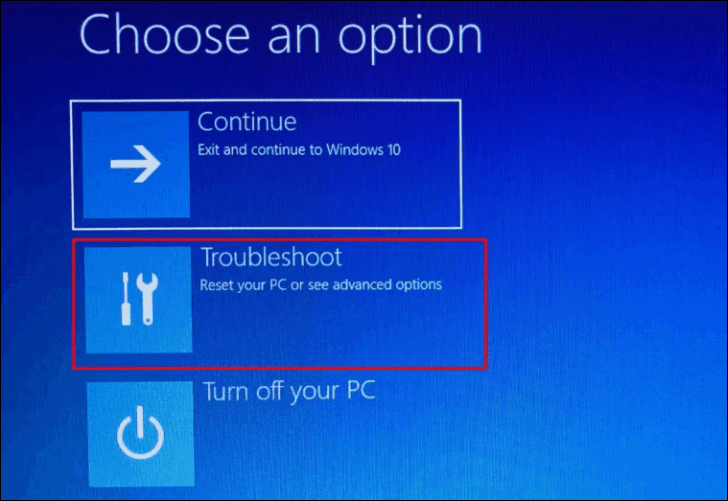
On the ‘Troubleshoot’ screen, select ‘Advanced options’.
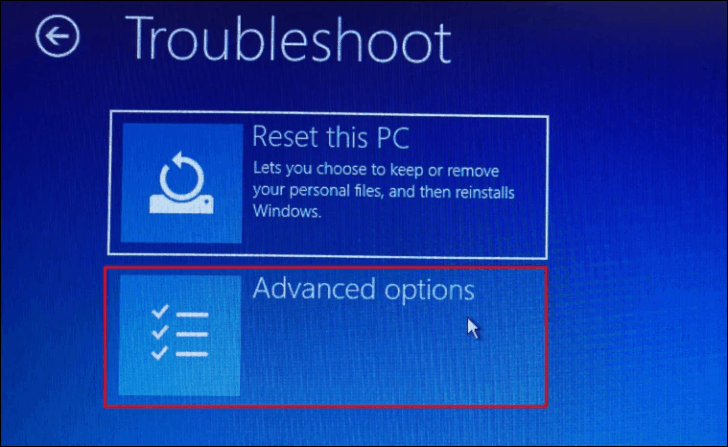
In ‘Advanced options’, you will find six options listed on the screen. Select ‘Command Prompt’.
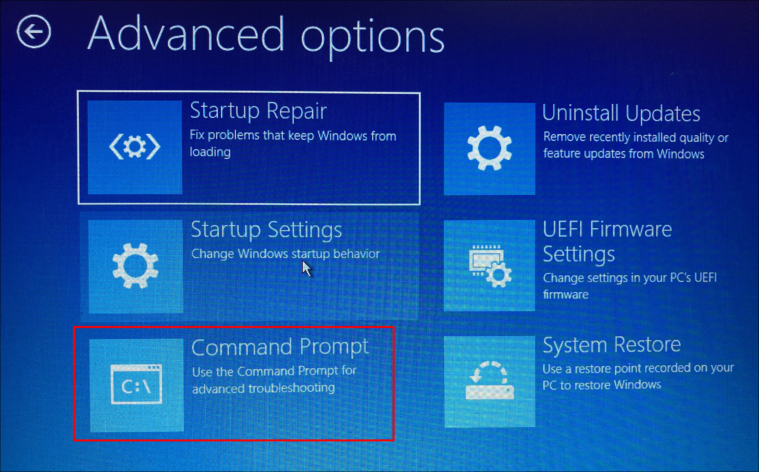
The Command Prompt window will now launch.
10. Open Command Prompt while Running Windows Setup using Bootable USB Drive
If Windows gets corrupted and cannot boot at all, you can still access open the Command Prompt using a bootable USB drive. So first, create a bootable USB drive and then connect it to the system where you want to open ‘Command Prompt’.
Note: We have performed the following steps on an HP laptop. The interface and inputs may be different for other manufacturers. We suggest you search the web or check the manual that came along with the computer for help.
After connecting the USB drive, turn on the computer and press the ESC key as soon as the screen lights. You will now find multiple options listed in the ‘Startup Menu’. For example, press F9 to enter ‘Boot Device Options’.
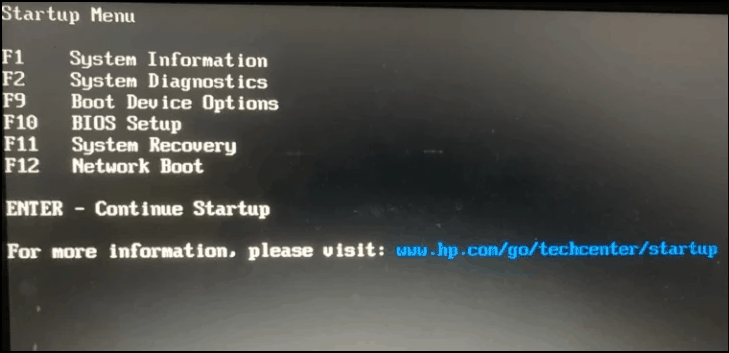
Next, use the arrow keys to select the bootable drive that you earlier created and press ENTER.
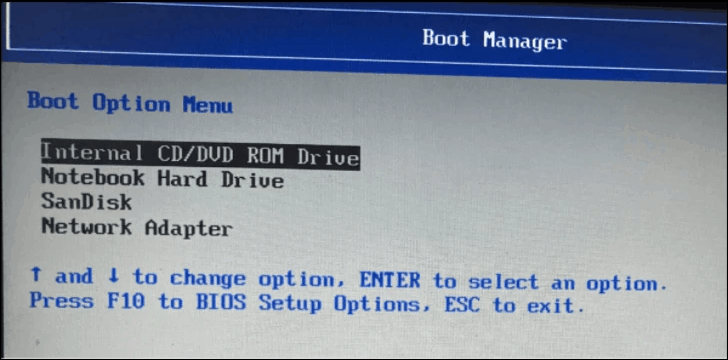
Windows will now work on the installation setup and get things ready. This may take a few minutes.
After the Windows Setup window launches, click on ‘Next’ at the bottom-right corner.
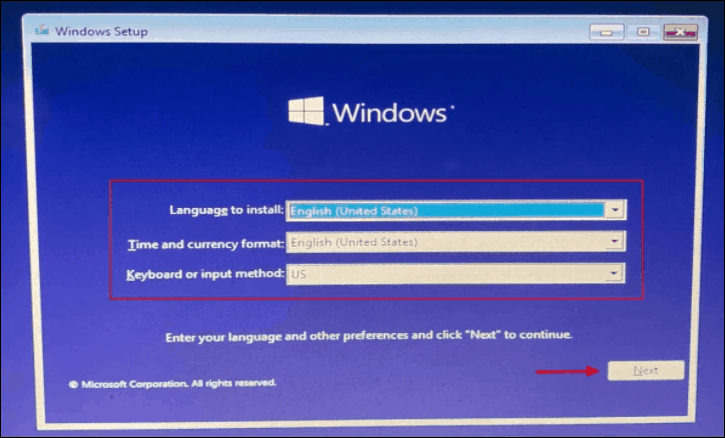
On the next screen, click on the ‘Repair your computer’ option at the bottom-left corner.
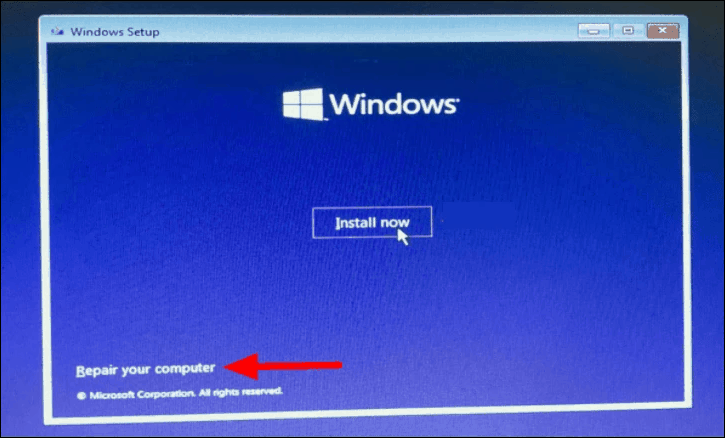
Next, select ‘Troubleshoot’ from the three options listed on the screen.
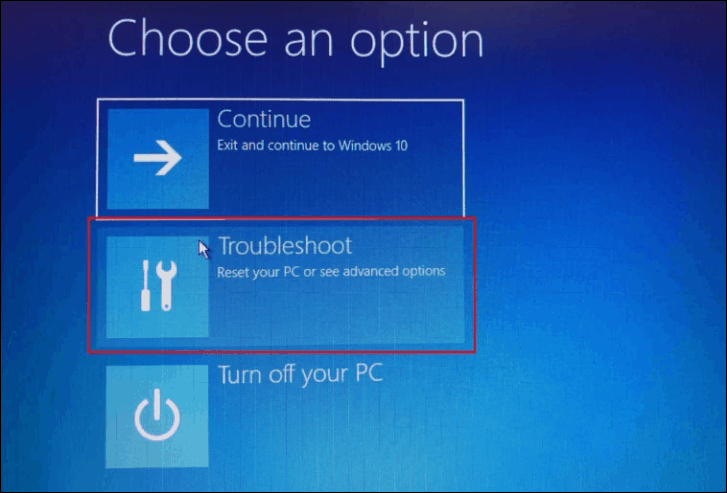
You will now find ‘Command Prompt’ in the ‘Advanced options’ screen. Click on the option to launch Command Prompt.

These are all the ways you can access Command Prompt on Windows 11. The first eight are fairly simple and quick, while the last one can be used if Windows doesn’t boot. Whatever be the case, you can always open Command Prompt from now onwards.










Member discussion